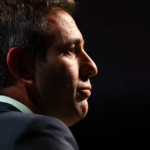Mutual co-evolution as the hidden business value of Twitter
The upcoming stock market debut of Twitter is highly anticipated. Ken Eustace from the School of Computing and Mathematics at CSU explains why Twitter needs to work together with traditional media companies and other social networks in order to establish a successful business model.
Twitter is the latest social media service to consider an initial public offering (IPO), but the business value of the shares is just as uncertain as it was when Facebook made its public offering. Twitter has reached this stage in its development just over seven years since its founders, Jack Dorsey, Noah Glass, Evan Williams and Biz Stone, started the social network on 15 July 2006.
Understanding the business value of Twitter stock in an investment portfolio requires deeper analysis away from the notion of a simple ‘try before you buy’ approach.
Social media is now a huge marketplace that builds and sustains networks of friends or associates. ‘Socialnomics’ is the new growth economy term generated by social media business models and market mobilisation. Erik Qualman’s 2nd edition of ‘Socialnomics: How Social Media Transforms the Way We Live and Do Business’
Twitter users may understand what they value most about the medium. This may range from self expression following an event, pursuing a political agenda to marketing a product. But it is harder for investors to understand what is the product or service Twitter offers as stock beyond advertising revenue. Perhaps such value will emerge by examining the strengths and weaknesses as well as the technology and processes used at Twitter.
Twitter has the benefit of learning from the Facebook experience in 2012 but it needs to express its business value in clear terms. To help determine the ‘socialnomic value’ of Twitter, it may be useful to look at the unique features of Twitter that influence others and to widen the scope of your thinking to include and consider who else values Twitter. Two unique features of Twitter include the mechanisms that establish and drive social relationship building and the speed with which information can spread as it hops from one node to another across a social network or community.
It is important that Twitter differentiates itself from the other social networks as observed by its acceptance by the traditional media as ‘the micro-messaging service’ of choice. Such evidence is provided by observing the use of Twitter as a news or messaging service on radio and television networks. Such a relationship opens up a future with the mutual co-evolution of Twitter and the traditional media companies, underwriting the value of each other.
In the latest issue of Forbes magazine (Bercovici, 2013), the Twitter CEO, Dick Costolo is quoted as saying: “Broadcasters have come to understand that we are a force multiplier”.
While the Twitter float is targeted at seeking more than just advertising revenue, its current value to the TV networks is as a complementary service to news and live shows. However Bercovici (2013) suggested that Twitter may now have a bigger role as a partner in helping the TV networks adapt to the wider threats of the digital revolution alternatives and their own falling viewer numbers.
Each Twitter account is a ‘node’, and the links are shared using a ‘Friend of a Friend’ (FOAF taxonomy) with many nodes making their own connections that are labeled as ‘edges’. These edges are building relationships between nodes as each Tweet contributes an attitude or opinion. Over time a consensus network of interpersonal relationships may appear as a densely concentrated system of nodes and edges that we call a community. The social network then continues its growth and evolves into a network of communities. Perhaps the analogy with how the stars formed into galaxies is appropriate.
Such information spreading patterns can occur quickly as shown by the evidence-based research provided by Doer, Fouz & Friedrich (2012). Their research results provided some insight on Twitter as they tried to simulate the information spreading process in various network topologies and analysed how news of global social and commercial interest spread in social networks. They used data collected when Twitter was much smaller in size but still significant. By investigating why rumours spread so quickly in social networks they discovered that:
“a rumor begun at a random node of the Twitter network reaches on average 45.6 million of the total 51.2 millions members within only eight rounds of communication” (Doer, Fouz & Friedrich, 2012)
These results confirmed that information spreads much faster in Facebook and Twitter but also revealed the pattern or topology of how it happens. Facebook and Twitter can work in tandem to make communication and collective action very effective, particularly during natural disasters like bushfires, cyclones and floods. This tandem ability to collaborate and complement other media services is where I feel that the real or socialnomic business value of Twitter shares exists.
I see the new business model for Twitter maybe based on a process of mutual co-evolution with the traditional media companies, initiated and enhanced by any partnerships that develop with the TV industry and coupled with the continuation of its value as a rapid and always online information service to the wider community. The idea of such mutual co-evolution has already extended to joining up with the other social networks. The connections between Twitter, Facebook and LinkedIn add to the complexity of the social network trust patterns that exist for business.
Bercovici, J.(2013). Can Twitter Save TV? (And Can TV Save Twitter?). Forbes Magazine, accessed 14 October 2013.
Doer, Fouz & Friedrich (2012). Why rumors spread so quickly in Social Networks, Communications of the ACM, Vol. 55, No. 5, pp. 70-75.
Qualman, E. (2013). Socialnomics: How Social Media Transforms the Way We Live and Do Business, 2nd ed. Wiley: New Jersey.
Ken Eustace is an Information and Communications Technology Lecturer with School of Computing and Mathematics at Charles Sturt University in Wagga Wagga, NSW.














mobilepundits
October 29, 2013 at 11:10 am
twitter marketplace
twitter marketplace is spreading day by day,now it become a business trend to twit there and make personal relation over in terms of strategies planning and innovation.